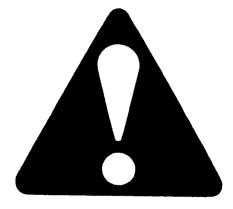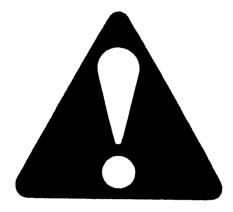
1 minute read
SAFETY
Ü DO NOT turn quickly while traveling on a slope or operate the machine beyond the grade and slope limits noted in the Operation and Adjustments chapter of the Operator’s Manual.
Ü If necessary to park on a slope, park across the slope and block the tires.
Ü NEVER allow any riders on this machine. This is strictly a single-seat, NO-passenger machine.
Ü NEVER use as a lift for personnel unless the machine is equipped with the Personnel Work Platform (PWP) System.
Ü When road travel is required, know and use the signaling devices on the machine. Provide an escort and Slow-Moving Vehicle (SMV) emblem when required.
Ü Solid rubber tires are designed for intermittent service and limited running distances. The Working Day Average Speed should not exceed 3 mph at an average load of 75% of maximum capacity. Telehandlers equipped with solid rubber tires should not be used in applications requiring speeds over 15 mph, or continuous journeys over 1 mile when loaded at or above 50% of capacity. In the event an application requires vehicle speeds over 15 mph, excessive roading, or driving extended distances while loaded, Gehl recommends the use of other approved tire options.
Suspended Load Safety Reminders


The handling of suspended loads by means of a truss boom, winch, boom mounted lift hook or other similar device can introduce dynamic forces affecting the stability of the machine that are not considered in the stability criteria of industry test standards. Grades and sudden starts, stops and turns can cause the load to swing and create a hazard. Refer to the following guidelines for handling suspended loads.
Warning
U.S. OSHA regulations effective November 8, 2010 (29 CFR Part 1926, Subpart CC - Cranes and Derricks in Construction) include requirements for employers that use powered industrial trucks ("forklifts") configured to hoist (by means of a winch or hook) and move suspended loads horizontally. In particular, this regulation applies to any rough-terrain forklift (e.g., "telescopic handler") equipped with a jib or truss boom with a hook (with or without a winch), or a hook assembly attached to the forks. [Note: This regulation is in addition to the OSHA regulation that requires specific forklift operator training: §1910.178(l).]
When a forklift / telescopic handler is configured and used for hoisting, the employer must ensure that:
1.Forklift, lift equipment and rigging have been inspected (each shift, month and year) and are in good, safe condition and properly installed.
2.An operator's manual and applicable load charts are on the forklift.
3.Work zone ground conditions can support the equipment and load. Any hazardous conditions in the work area have been identified, and the operator notified.
4.Equipment is being used within its rated capacity and in accordance with the manufacturer's instructions.
5.Operator and crew members have been trained in the safe use and operation of the equipment, including how to avoid electrocution.








